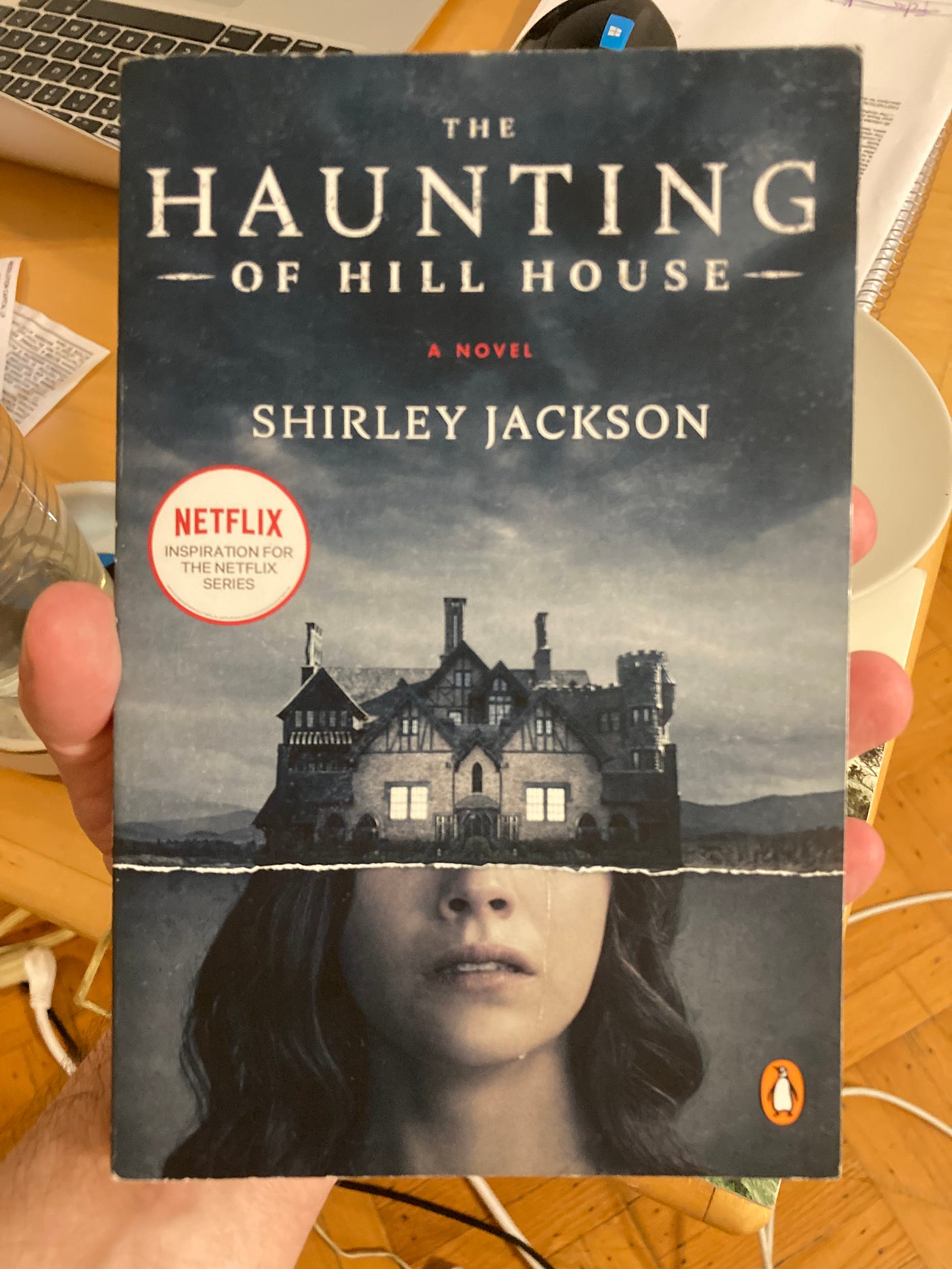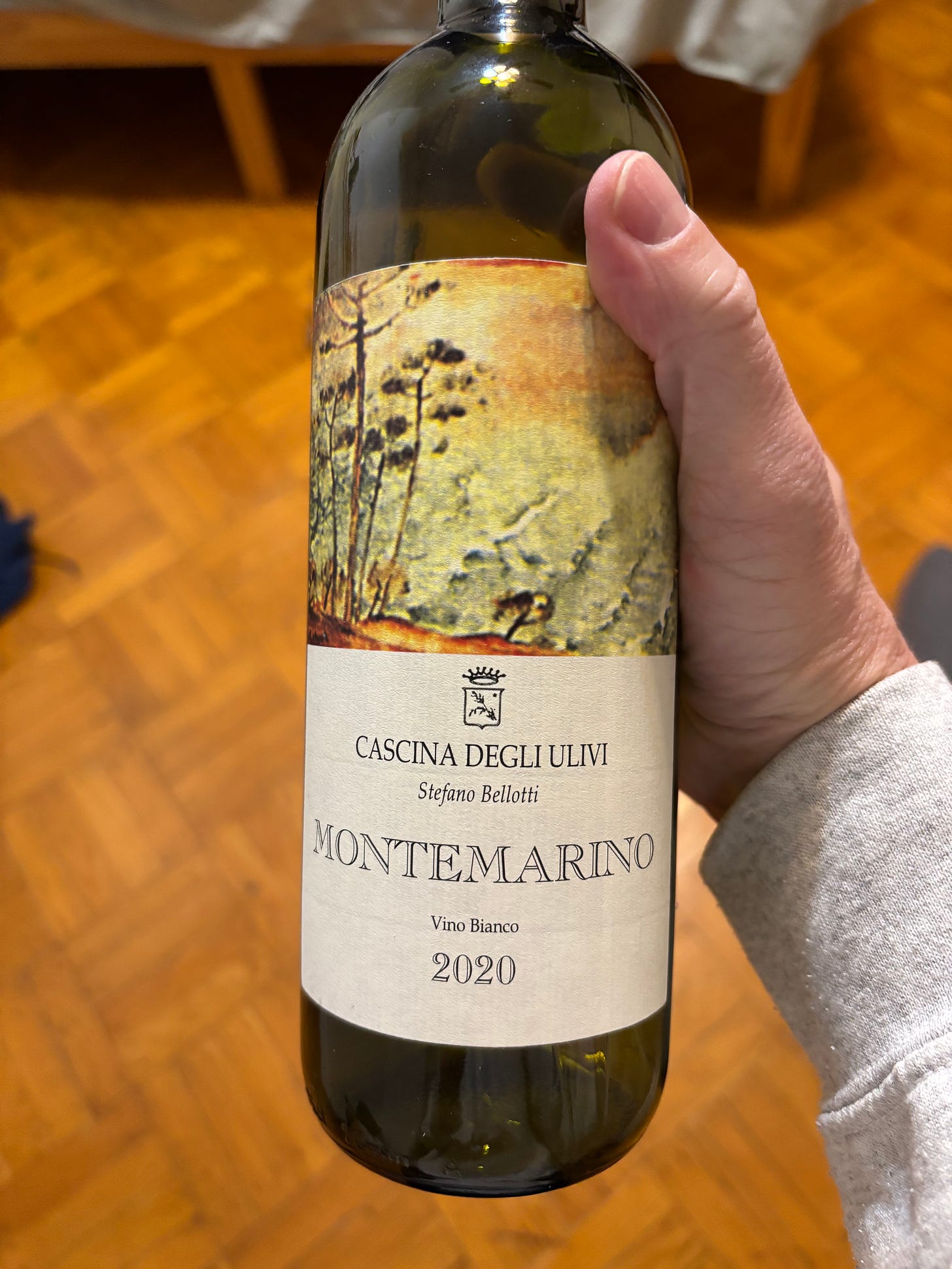Crack Open a Book and a Bottle
Ruinously sad Shirley Jackson, bittersweet Donna Summer, and wine from Gavi that makes life seem worth living
This week’s Spigot is long on books, wine, and music, short on art. I bit off more than I could chew in attempting to write an essay on a couple shows currently up in NYC, whose primary connection may or may not be that they’re next door to each other. (Some related research on Berlin Dada turned up the Hausmann image above.) Let’s assume that I finish the opus next week, and hope that it’s worth a damn. Meanwhile I offer you horror, disco, and wine to ease the pain.
Paid subscribers receive a bonus this week—my list of current New York exhibitions worth visiting. The town is filthy with them at the moment.
Books
It feels unchic to admit it, but for a month last year, I read Shirley Jackson. Mainly I feel a little embarrassed because “The Lottery” is so overexposed. For me the story is associated with ninth grade, and Jackson has indeed been pitched in a way that borders on YA, no doubt because of her ability to intricately convey the interior lives of young women (who by being cloistered seem even younger than they are). Her worlds are both compelling and sketchlike outside of the protagonists’ psycho-emotional tone. Her writing is searingly sad, and I don’t know quite how she does it.
Both of the Jackson books I bought have atrocious covers, corroborating my sense of how she’s been marketed. The Haunting of Hill House is a Netflix edition with a cliché, post-Saw-bronze-tint literalization of the concept of gothic horror, while We Have Always Lived in the Castle looks like a McSweeney’s children’s book (and indeed, that edition dates to 2006, with an introduction by Jonathan Lethem). I decided to read her work because I’m interested in horror but I’m also squeamish, and I knew her books wouldn’t keep me up at night—not for that reasons of gore, anyway.
Hill House is the more unnerving of the two books, in part because of the supernatural goings-on but moreover for its fugue-like intensity. A ghost hunter invites a few people to spend the summer at a supposedly haunted house, each chosen for a connection to eerie events in their past. The protagonist is Eleanor, a cloistered and naïve young woman who had for years taken care of her invalid mother, at times willing her to die—a wish that eventually came true, which cast Eleanor out into a less idyllic world than she imagined. The other woman in the group, Theodora, is blithe and independent, recently fallen out with her “roommate,” who the novels hints was more than a merely platonic pal—and indeed, Eleanor’s inchoate yearning for both Theodora and the heir to the house, Luke, suffuses the book.
As spooky events begin to pile up, the relationship between Eleanor and Theodora becomes tensely eroticized. They take up residence in two connecting rooms. They wear each other’s clothes. They flirt, tentatively. Theodora paints Eleanor’s toes, which is clearly the most erotic experience of her life. Meanwhile strange, increasingly violent events on the premises mount: when Theodora’s room is trashed by a ghost, bathed with something like blood, she moves into Eleanor’s, where they hold hands falling asleep to eerie babbling coming from next door.

Eleanor is eventually explicitly sought out by the spirit, who scrawls her name on the wall. The atmosphere—and Eleanor’s increasingly disordered, titillated mind—are best captured in her occasional conversational outbursts, which grow to disturb her associates:
“Those letters spelled out my name, and none of you know what it feels like—it’s so familiar. . . . There’s only one of me, and that’s all I’ve got. I hate seeing myself dissolve and slip and separate so that I’m living in one half in my mind, and I see the other half helpless and frantic and driven and I can’t stop it, but I know I’m not really going to be hurt and yet time is so long and even a second goes on and on and I could stand any of it if only I could surrender—
“Surrender?” said the doctor, and Eleanor stared. . . .
“I don’t know,” Eleanor said, perplexed. I was talking along, she told herself. I was saying something—what was I just saying?
Jackson skillfully blurs Eleanor’s perspective with a more objective third-person accounting of events, an impressive feat she accomplishes it by giving the whole book a feverish air—it’s a ghost story, after all. It becomes impossible to know whether Eleanor is the target of an attempted possession or is losing her mind, possibly even inventing some of the disturbances that occur. The atmosphere, where a sense of inevitable doom is infused with searing desire, reminded me unexpectedly of Anna Kavan’s Ice. In that book, an absolute masterpiece, the unspoken desire is for heroin. Here, it’s less for sex than any kind of deep connection, which Eleanor has never experienced outside the mangled one with her mother.
I hesitate to spoil the book, but it won’t be shocking to reveal that eventually Eleanor meets an unhappy fate. The book’s message is that no one will take care of you if you’re lost, mad, and alone—shunning is a big part of Jackson’s psyche, apparently, as it grounds We Have Always Lived in the Castle and, of course, “The Lottery.”
Wine
Casina degli Ulivi Stefano Belotti Montemarino 2020. Last week I came across a truly beautiful white wine. I found it at a natural wine store that I quietly hate, but a friend was coming over and I was in a rush. The label bore a semi-pixilated ecstatic rendering of a few spindly trees approaching sunset, which piqued my interest. When I inquired with the clerk, they told me with all solemnity that the vintner, Stefano Belotti, made bottles that could be “life changing.”
Inside, I rolled my eyes. On the other hand, I’m a sucker for an upsell.
The Montemarino starts out with a great trick of volume, inflating like a smoothly blown balloon the instant it hits your tongue. Weight and tone shade into flavor: the wine has the springwater quality of a great Riesling but is limned with fruit, semi-tropical—like a Chenin Blanc, perhaps. That’s unusual enough as it is, but as the wine proceeds down the tongue it narrows to a sharp tip like a molten bulb pinched off the end of a glassblower’s pipe. It gains texture as it goes along, too, a brush of white Bordeaux or, again, Chenin. The bottle has three days of skin contact, just enough to produce that gentle grip at the end and a faded tangerine hue.
For the nerds out there: the wine comes from the Italian region of Gavi, apparently from its highest elevation, which is good for reasons someone should explain to me sometime. The grape is the local Cortese, which is the same one used to make the crisp, tart Gavi wine itself. The methodology with Montemarino is different, however. Cascina degli Ulivi was biodynamic before that was a thing, and the complex outcome reflects it. The life-changing Stefano Belotti died in 2018, but the winery continues to produce its unique wares today under the direction of his daughter, Ilaria.
Music
Recently I saw on some social feed a musician who was otherwise posting bands like Polvo and Les Rallizes Dénudés say that the A side of Donna Summer’s 1979 Bad Girls was an all-time great, especially for a double album. Having never picked up the vinyl at a stoop sale or etc., I pulled it up on Apple Music. It’s a rangy album, not just Moroder grooves—though they do sound good, sinewy in their machine-flesh way. I only wish the album (and the whole idiom) had fewer show-tune key changes, whistles, handclaps, and other dilutions of the era.
My big discovery was on side D, the prepossessing, melancholic “Lucky.” It comes next-to-last on the album, fittingly for its 5 AM mood. The degree-zero Moroder groove is unadulterated (aside from some squishy, almost flatulent sound on the 2s and 4s), with stardust synths occasionally tumbling over the insistent rhythm track and Summer’s breathy, vulnerable vocals. The lyrics offer a human POV on hedonistic disco fever: “Scared and lonely / Goin’ out for the night / Shakin' all over / And wishing I'd never come here.” Here being the clerb, of course, though feel free to imagine her as a zennial picking up takeout.
Despite the narrator’s flickering need, the night’s romance ends up being transient, with all the bafflement and erotic power of an unexpected hookup—that evanescence that seems especially strange to a listener in an era post celphones, social media, social hyperniching, catching up in DMs, paranoia, and the surveillance capitalism of which dating apps are a bitter, integral part. Summer’s mythic metropolis seemed like something one could dissipate into, an end of the earth rather than a warren through which one will be inexorably, fatally tracked—and I don’t mean by one-night stands, fate, or God.
Like the song’s arc, the protagonist’s feelings about her rendezvous with the title’s eponymous gent (who “comes easy,” in one of a couple twists on the word lucky itself) are never resolved, which leaves the experience tantalizing—the kind of erotic fuel that will keep you going out in search of chance crossing of paths, a moment you’ll daydream about for years. There’s something about the other person’s ability to disappear that’s sad. But it also reminds you that you can disappear too—or once could. And that’s hot.
Art
Lastly, NYC exhibition picks for my ~premium~ members.
Some shows on my list I know firsthand are good. Sam Anderson’s spooky, salient tableaux at Derosia is one example; her wary tableaux balance the symbolic and the phenomenal through the figure of the doll. See it ASAP.





